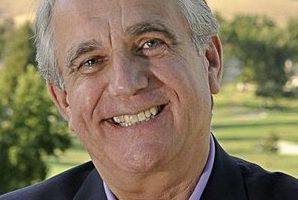Book Review of “Measure What Matters: How Google, Bono, and the Gates Foundation Rock the World with OKRs,” by John Doerr
The real job of leaders is not to formulate a “vision” and then delegate it to others to make it happen. Leadership is many things but at its essence, it is about delivering results. Results do not just happen.
Leaders know that the difference between a having a vision and getting results is rooted in the discipline of execution. Insuring execution is their most important role.
Execution leadership requires the linkage of people together with personal accountability, adequate resources, communication and a flexible but common strategy…and the real-time measurement of actual versus planned results. This has been characterized as “Continuous Performance Management” and is the foundation for organizational excellence.
OKRs and CFRs to achieve excellence
Author John Doerr’s “Measure What Matters” serves up Objectives and Key Results (OKRs) and Conversations, Feedback and Recognition (CFRs) as tools he and others have implemented to achieve excellence.
OKRs/CFRs were a staple used by former INTEL CEO, Andy Grove, in achieving “High Output Management” when Doerr was at INTEL. Doerr was an acolyte and brought these concepts with him to venture capital firm, Kleiner Perkins Caufield and Byers, where he directed venture capital funding to some of the most successful technology companies in the world including Compaq, Netscape, Symantec, Sun Microsystems, drugstore.com, Amazon.com, Intuit, Macromedia, and Google.
Now considered the “Johnny Appleseed” of OKRs/CFRs, Doerr influenced some of the world’s most successful entrepreneurs, including Larry Page, Sergey Brin, and Eric Schmidt of Google, Jeff Bezos of Amazon.com, and Scott Cook and Bill Campbell of Intuit, to adopt them in their quest for success. Stories of how OKRs/CFRS were implemented by his stable of entrepreneurs are used throughout the book to highlight the why and how, and results of effective use.
Four superpower results
Doerr’s “Measure What Matters” notes four superpowers gained from the use of OKRs:
- Focus and Commitment to Priorities
- Alignment and connection for Teamwork
- Tracking for Accountability (and introspection)
- Stretching for the Amazing (high performance)
Doerr characterizes CFRs as the equivalent of Monday videotape postmortems, midweek intrasquad meetings, huddles and celebrations.
When an employee (player) is struggling, neither a leader nor the employee can wait until a prescribed time for a tough discussion. The time is NOW.
Five key questions
Five key questions for a leader to ask routinely are:
- What are you working on?
- How are you doing?
- Is there anything impeding your effort?
- What do you need from me to be more successful?
- How do you need to grow to achieve your career goals.
Doerr recommends an end to linking Objectives and Key Results (OKRs) to compensation and ditching performance reviews. Continuous performance management is an every day activity and objectives tied to compensation and lead to team dysfunction.
What Google discovered
GOOGLE, an OKR practitioner, found a correlation between standout performance and its use of OKRs.
Google discovered that the consistent use of Objectives and Key Results provided:
- Structure and Clarity
- Psychological Safety
- Increased Meaning of Work
- Dependability on Others
- High Personal Impact on Work
Recommendations
If you are in the hunt for a good performance management system, OKRs/CFRs must be on your list.
There are other simple systems to review as well: The Rockefeller Habits; Salesforce.com’s V2MOM; and MORPHS.



You must be logged in to post a comment.